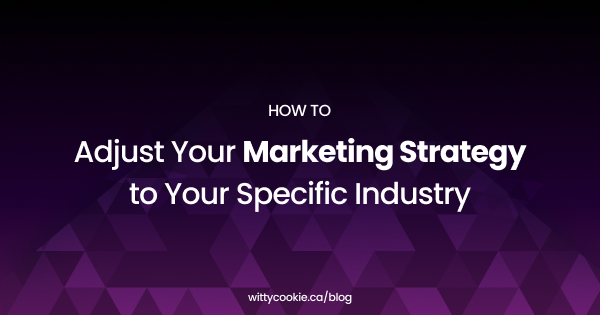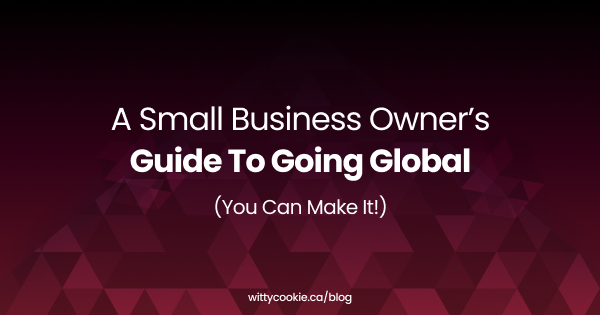How to Adjust Your Marketing Strategy to Your Specific Industry
Every marketing strategy is different, which is why it’s so important to understand how your own marketing plan will specifically impact your business. After all, knowing the ins and outs of your company and coming up with a plan that fits you as an individual business is key to success.
While there are a lot of universal tips that can be used in any situation, every industry has its own nuances that require a bit of tweaking if you want to succeed. That’s why we’ve come up with 10 specific tips on how you can adjust your marketing strategy to suit the needs of your specific industry.
What is a Marketing Strategy
A marketing strategy is a set of goals, objectives, and tactics that define your business’s mission. It includes a marketing budget and the overall messaging you’ll be using to market your company. This can be anything from a simple pitch to an entire “how do I do this?” pitch. There are two types of marketing strategies:
- General Marketing Strategies: These include things like “how can I promote my product or service?” The general strategy is something that you can build on top of your specific marketing plan. Instead of thinking about how you can make a specific product or service better, think about how you can make it more efficient and effective.
- Designing for Marketing: These strategies include those that go beyond what was originally intended for a specific market or industry. They focus on building your brand name and positioning yourself as an industry leader in the area of which you want to target consumers with your marketing efforts. This could be through the use of social media, information technology, or other marketing channels.
How to adjust your marketing strategy
Now that we know the different types of marketing strategies, let’s dive into the 10 ways to adjust your marketing strategy.
1. Improve your email marketing
While we’re not quite at the point where email is a dying marketing channel, it’s still important that you stay on top of trends so you can improve your email strategy. You’ll want to keep an eye out for open rates, click rates, and other metrics to make sure you’re optimizing your emails so they have the best impact on your leads.
You’ll also want to pay attention to the content that’s most effective for your particular industry. If you’re in a highly regulated industry, you likely won’t be able to send the same types of emails as a company in a less regulated niche.
Similarly, if your industry is more business-to-business (B2B), you’ll want to focus on sending more informational, educational emails rather than sales-focused ones. To optimize your emails, you can use tools such as Mailchimp, which helps you create and manage your campaigns and send messages to your audience.
However, there are lots of other Mailchimp alternatives such as flodesk, mailerlite, and campaign monitor. You can learn more about alternatives to Mailchimp and select one that works best for your industry.
2. Stay on top of the latest trends
Whatever industry you’re in, you’ll want to stay on top of the latest trends. What are the hot new topics? What are the buzzwords that people are using? To begin with, take a look at the latest marketing campaigns from your competitors; see what they’re focusing on and why.
You also need to take a look at current events in your industry as well as popular topics in other industries to see how they might be applicable to your business. Again, this doesn’t just apply to marketing, but to every aspect of your business. Be on top of the latest trends so you build your marketing strategy around them.
3. Optimize your website design
As you’re building out your marketing strategy, you’ll want to pay attention to your website design. Specifically, you’ll want to look at your website’s layout, color scheme, and imagery. With these aspects of your website, you can directly impact your ability to convert leads.
For example, you may find that more people are converting on your site when you change the call-to-action button from “Buy Now” to “Start My Free Trial.” A simple change like this can make a big impact on your results. You should also pay attention to the flow of your website. Does it feel natural? Do people have a clear path of where they should go? To get the best out of your website it’s good to hire a website design service to help you out.
4. Be authentic
No matter what marketing strategy you’re using, you want to make sure that you’re being as authentic as possible. This includes everything from the language you use to the images you post.
You want to make sure that your customers know that they’re dealing with a real person. No matter what industry you’re in, online customers want to know that they’re dealing with a human being. If you’re hiding behind a facade, you’re likely to scare away more leads than you’ll convert.
5. Don’t be afraid to adjust your strategy
Building a marketing strategy is important, but it can be easy to get so wrapped up in the specifics that you don’t have the flexibility to change your strategy as needed. Don’t be afraid to make adjustments as needed.
If you’re finding that your industry has a specific challenge that your strategy isn’t addressing, take the time to figure out how to tweak it so it works better. You’re not going to know what to change unless you’re paying attention.
If you’re attending conferences, taking surveys, or otherwise getting to know your audience, you’re going to have a better understanding of what they need, want, and are struggling with. Use this information to tweak your strategy as needed.
6. Learn from your data
While you should be keeping an eye on the latest trends, don’t be afraid to look at the data that you have available from the present. After all, you have access to more data than you likely realize.
You should be tracking your marketing efforts to see what’s working and what’s not. You should also be keeping an eye on your website’s analytics to see what’s bringing people to your site. Keep an eye on the data so that you can make adjustments as needed.
7. Partner up with other businesses
If you’re in an industry that’s highly regulated, you may not be able to use some of the marketing strategies that are common in less regulated industries. One way to get around this is to partner up with another business that’s in a less regulated industry and can help to promote you.
You set up a partnership where you link your two businesses together; maybe you have a golfing equipment store and a golf instruction business, for example. You can offer promotions together where customers can get discounts if they buy golf clubs from your equipment store and lessons from your golf instruction business. Such partnerships help you to use the more effective marketing strategies from other industries on your own.
8. Diversify your content portfolio
When you’re creating a marketing strategy, you can’t just focus on one type of content. Instead, you want to make sure that your marketing efforts are diversified. You want to make sure that you’re posting blog posts, creating videos, sharing on social media, and doing just about everything you can to get your name out there.
Again, you want to pay attention to the trends in your industry but also to what works best for your company. You don’t want to be creating a bunch of content that no one is going to watch, after all. Make sure that everything you’re posting is high quality and something your audience will find useful.
9. Don’t rely on one platform for leads
It’s easy to get in the mindset where you think that your best bet for leads is one particular marketing strategy. However, it’s important to remember that different people respond to different things, and one platform may not be the best fit for everyone.
Don’t rely on one particular platform to the exclusion of everything else; make sure you have a diversified marketing strategy that covers as many bases as possible.
10. Be active on social media
Today, social media is a powerful tool used in marketing, but people still aren’t using it the way they should. Social media is very powerful, but it’s also a very popular platform. It can be a great opportunity to build your brand and gain followers, but it’s not an easy platform to use.
You have to be active on social media; you have to keep up with the latest trends in your industry. You also have to keep up with the industry updates that are being posted on social media. You don’t want people becoming frustrated because you don’t follow everything that’s going on in your industry.
Do you think that social media is for everyone? If so, there are a lot of things that you need to do right away before you start using social media for marketing.
Summing up
At the end of the day, no two marketing strategies are ever the same. What works for your business might not work for your next-door neighbour, so it’s important to ensure that you understand your industry and what will work best for your company.
You want to make sure that you’re paying attention to the latest trends, tracking your data, and making sure you have a diversified strategy that includes as many types of content as possible. With the right marketing strategy, you can be sure that you’re reaching the right customers and securing their business.







